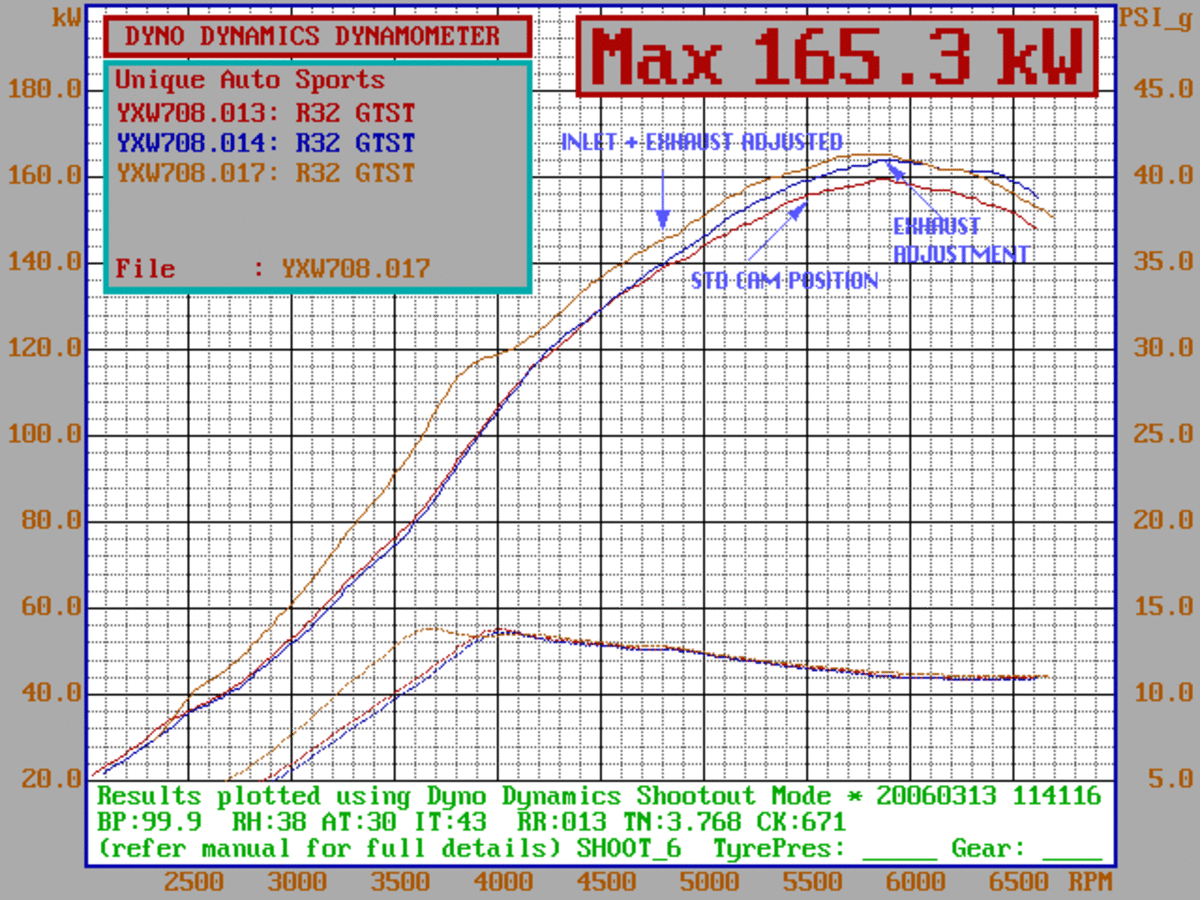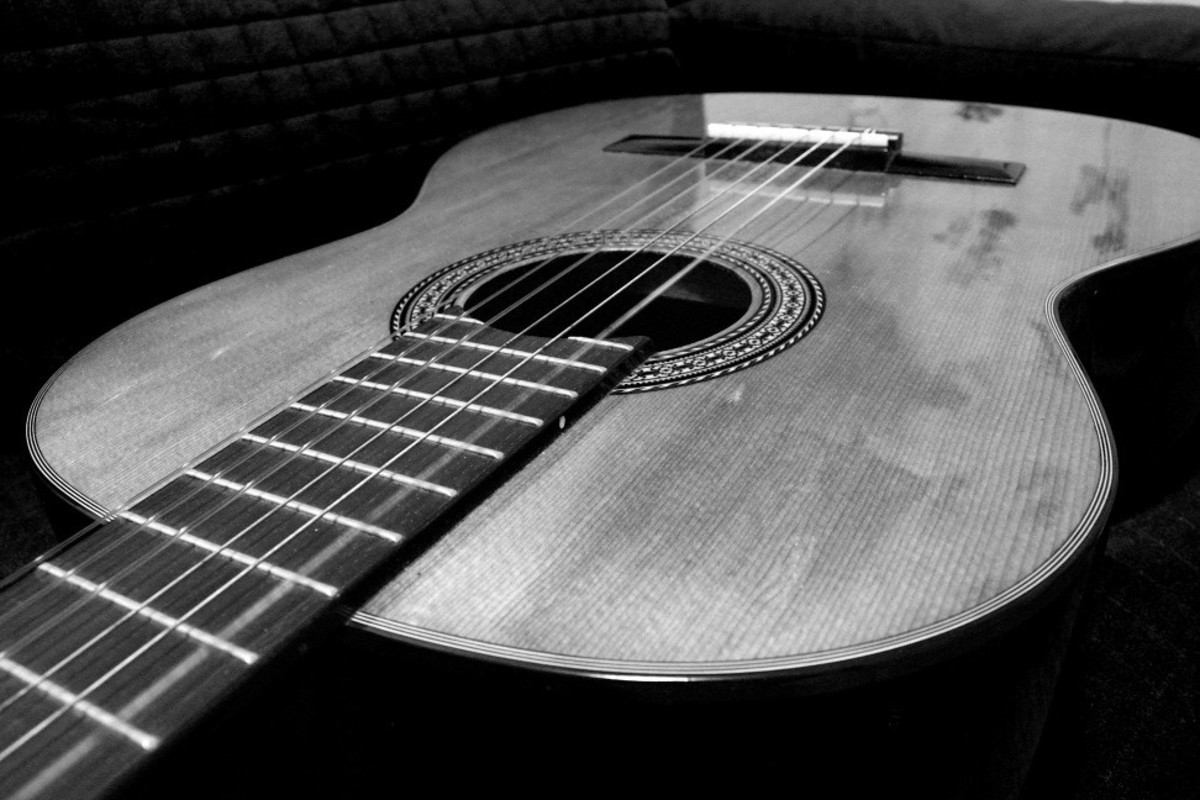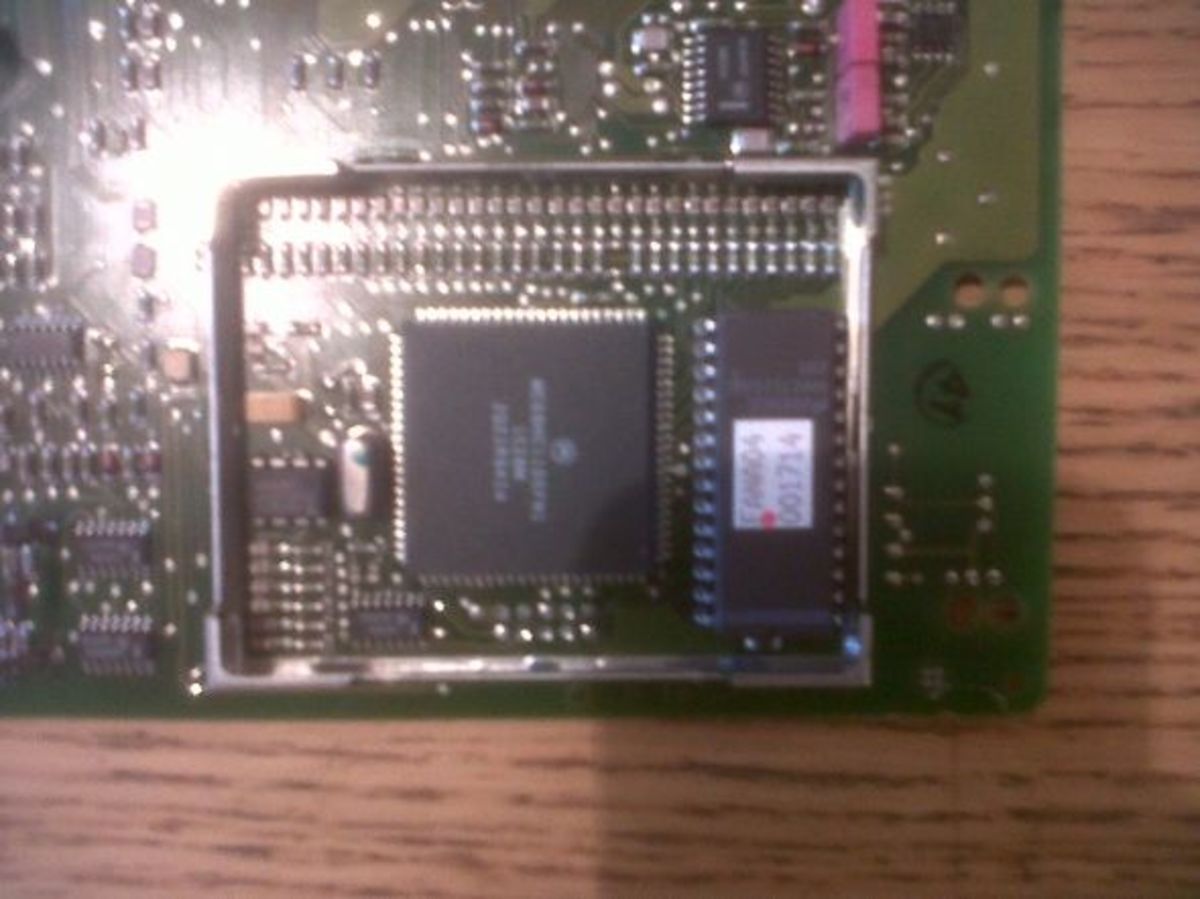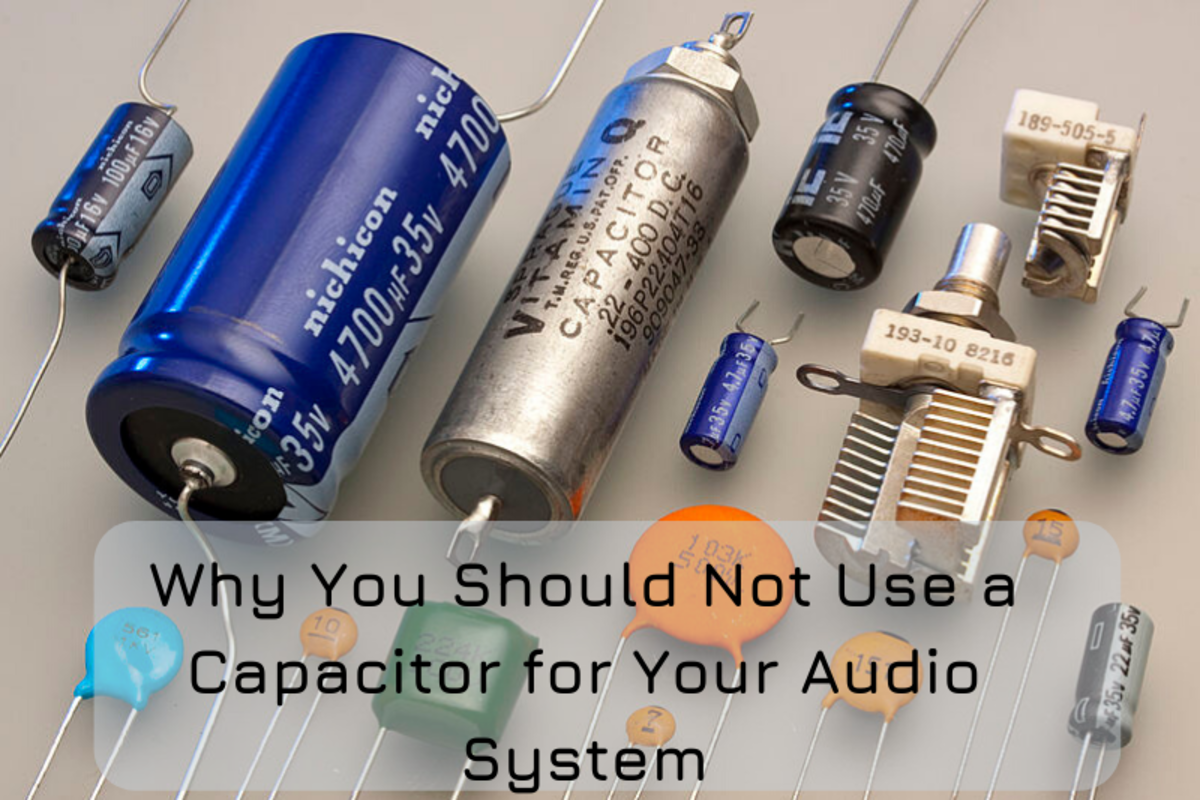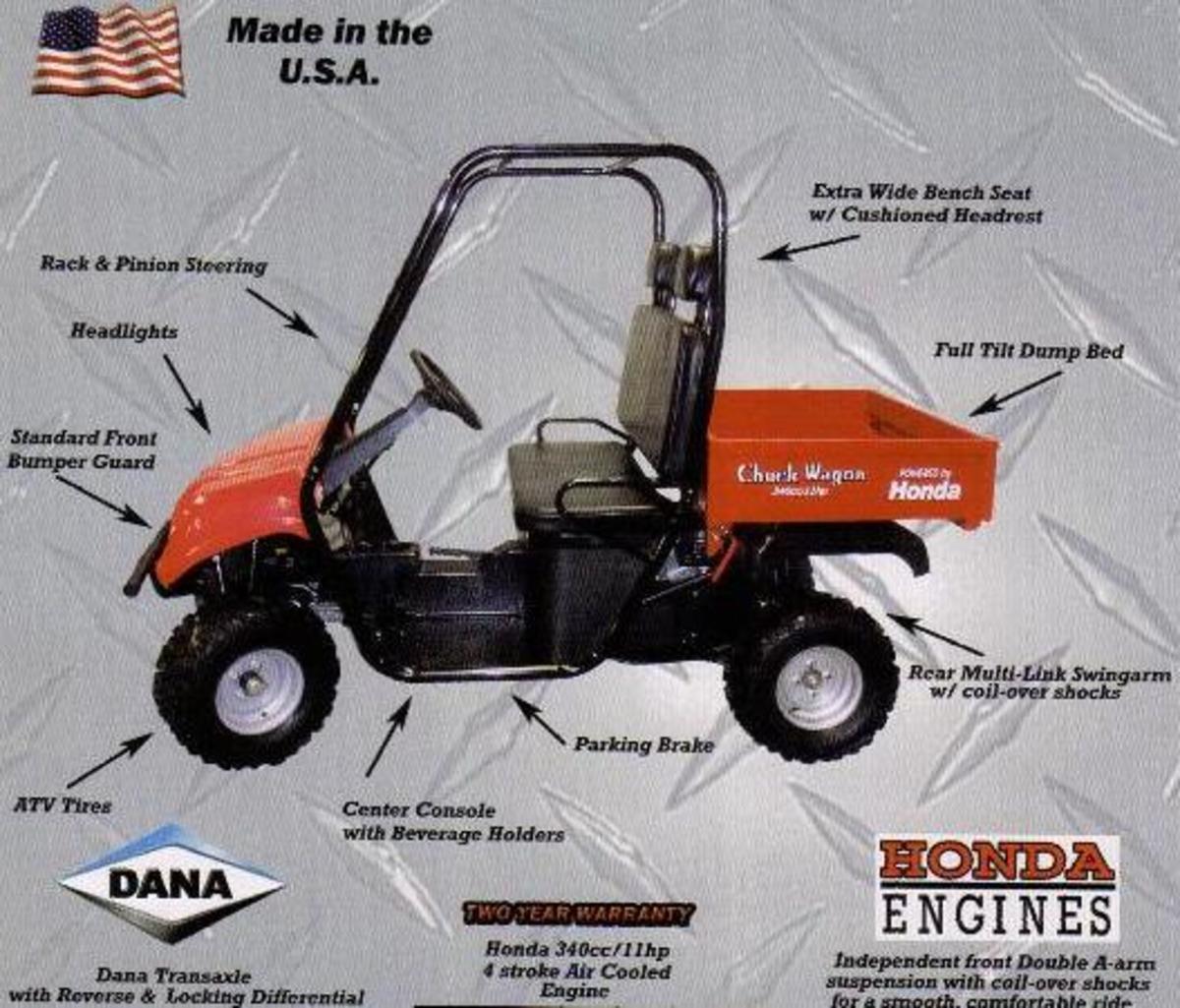RB26 Camshafts
Camshafts for the Nissan RB26
The Nissan RB26 engine is certainly worthy of its legendary status. With a rich and colorful history on both the street and track, the RB26 is a beast in stock form, and a monster when the aftermarket gets involved. Aftermarket RB26 camshafts are generally not necessary on a stock or bolt on equipped car. They truly start to show their value on engines equipped with larger turbochargers.
Following hot on the heels of my RB20 Camshaft upgrade article, I've decided to put together an RB26 camshaft upgrade article. This article will feature all the major available camshafts, various durations and lifts, and most importantly, price, sound clips (when available), and user reviews (again, when available). Below is a quick overview of the stock RB26 camshafts.
Benefits
- Smooth operation
- Wide, responsive power band
- Stable idle
- Reasonable emissions output
- Well optimized for stock
- Respond well to adjustable cam gears
- Adequate lift and duration for bolt on power upgrades
Negatives
- Inadequate lift and duration for larger turbochargers
- Chokes engine at significantly elevated power levels
- Designed for economy and emissions, rather than purely power.
- Heavier than most aftermarket camshafts
Stock camshaft specifications
- Duration (intake): 240°
- Duration (exhaust): 236°
- Lift (intake): 8.58mm
- Lift (exhaust): 8.28mm
The stock camshafts were designed by Nissan to provide an ideal compromise between power, torque, response, fuel economy, and emissions. For a stock turbo equipped RB26 engine, the factory camshafts will provide the best response characteristics, with only slight horsepower gains being possible with camshaft upgrades. Many users on Skylines Australia report that instead of upgrading camshafts when running stock turbochargers, it is more appropriate to upgrade to adjustable cam gears instead. Adjustment of the camshaft positioning can result in gains as high as 40hp, with additional torque throughout the power band as well.

Tomei RB26 Poncams
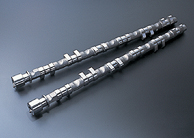
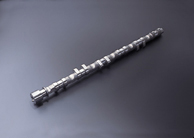
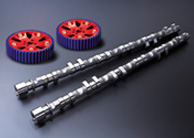
Tomei RB26 Camshafts
Tomei made a name for themselves in motor sports, a name that has become synonymous with the performance JDM aftermarket. Tomei produces various camshafts for the RB26 engine, the most mild of which are the Poncams. Designed as a mild upgrade when compared to stock, the Poncams fit all generations of the RB26 engine (R32, R33 and R34), and come in three flavors, Type A, Type B, and Type R. Below are the specifications for all three versions.
RB26 Poncam Type A
- Duration (intake): 260°
- Duration (exhaust): 252°
- Lift (intake): 9.15mm
- Lift (exhaust): 9.15mm
RB26 Poncam Type B
- Duration (intake): 260°
- Duration (exhaust): 260°
- Lift (intake): 9.15mm
- Lift (exhaust): 9.15mm
RB26 Poncam Type R
- Duration (intake): 250°
- Duration (exhaust): 250°
- Lift (intake): 9.15mm
- Lift (exhaust): 9.15mm
The differences between the Type A and Type B Poncams are limited, with the Type B version featuring 260° of lift on the exhaust, compared to 252°. This slight increase in duration means more air can enter the cylinders at higher RPM. The downside to additional duration is that low end power is sacrificed, as the turbochargers typically can not move enough air at lower engine speeds.
The Type R Poncams were designed by Tomei to cater to those who wish to remain "street legal" by Japanese standards. This means decreased duration for better emissions, as well as compatibility with stock or aftermarket catalytic converters.
How do I decide what version to use?
The slight difference in variation between the Type A and Type B poncams for the RB26 means that it may be difficult to decide which camshaft is right for your engine. Tomei themselves offer advice on the subject.
Use the Type A camshafts when the engine will be using stock or larger bolt on turbochargers. Use Type B camshafts when the engine will be using N1 turbo chargers or full aftermarket turbo kits. The Type R camshafts should be used when you want to retain the factory catalytic converter, or when you wish to upgrade to an aftermarket catalytic converter. Power wise, all three camshafts come in very close when equipped to a vehicle which still retains the factory cat.
Power differences between Type A, Type B, and Type R variants
- Poncam Type A: 405hp
- Poncam Type B: 406hp
- Poncam Type R: 404hp
All vehicles above were equipped with the factory catalytic converter. Keep in mind that peak power outputs only tell one part of the story. As of today, I have been unable to find dyno graphs that display differences in horsepower and torque production across the power band. According to Tomei, the decreased duration of the Type R RB26 camshafts allows for better response compared to the Type A and Type B variants.
Tomei Procam Camshafts
The Tomei Procam series of RB26DETT camshafts features several different options for both lift and duration. The lower lift and duration models of the Procams are the same as the Type A Poncams. Below is a list of all available lift and durations. Tomei classifies durations as Low, Mid, Hi, and Super Hi. All lifts are identicle on both intake and exhaust
HI lift designs
- 260°, 10.80mm
- 270°, 10.80mm
- 280°, 10.80mm
SUPER HI designs
- 280°, 11.50mm
- 290°, 11.50mm
LOW lift designs
- 252°, 9.15mm
- 256°, 9.25mm
- 260°, 9.15mm
MID lift designs
- 260°, 10.25mm
- 270°, 10.25mm
A few things to note about the above Procam camshafts. The low lift designs can be used with stock valve springs and lifters. The MID, HI, and SUPER HI designs require Tomei lifters and Tomei valve springs. In some cases, shims may be required for installation. The Procams are for the more serious engine builds, where increased mid to high RPM power is desired with a willingness to sacrifice low RPM power and and engine response.

Jun Camshafts
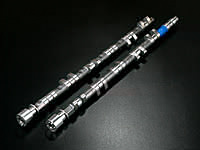
June RB26 Camshafts
Jun Auto Mechanic is known for their wild engine builds, and insanely fast top speed cars that compete in speed events all over the world. Jun also happens to produce some very high quality RB26 camshafts. Various lifts and durations and available, from simple bolt on styles to wild high lift and long duration designs that require extensive machining and/or other modifications. Below is a list of the available lifts and durations for the Bolt-on Camshaft Series, Regular Camshaft Series, and Advanced Camshaft Series. Lift and duration are the same for both intake and exhaust.
Jun Bolt-on Camshaft Series
- 248°, 8.80mm or 9.15mm
- 256°, 9.15mm
- 264°, 9.15mm
Advanced Camshaft Series
- 280°, 11.65mm
- 288°, 11.65mm or 11.80mm
- 296°, 11.65mm or 11.80mm
Regular Camshaft Series
- 256°, 9.7mm
- 264°, 9.7mm or 10.50mm
- 272°, 9.7mm or 10.50mm
- 272°, 10.80mm or 11.35mm
- 280°, 10.80mm or 11.35mm
- 288°, 11.35mm
Requirements for non Bolt-on Series camshafts
Similar to the Tomei Poncam RB26 camshafts, the Jun Bolt-on Series of camshafts features a direct drop in design. Designed for use with stock valve springs, lifters, and retainers, with no machining required, it makes it simple for the backyard mechanic to install. Jun makes no recommendations that I can find that indicates ideal usage, however the lifts and durations are similar to the Tomei Poncams, which indicates that the Jun Bolt-on Series camshafts will work on mildly modified street cars where a desire for more power and response is the goal.
Requirements for Regular Camshaft Series
The Jun Regular Camshafts require cylinder head machining and stiffer valve springs and titanium retainers when lift surpasses 10.50mm. The 9.70mm lift Regular Camshafts do not require aftermarket springs or retainers. As with most higher lift camshafts, these high lift style designs will show their worth in the higher RPM range, where they will allow more air to enter the cylinders for more power.
Requirements for Advanced Camshaft Series
Featuring aggressive lift and durations, the Aggressive Camshaft Series feature what most would consider all-out, high RPM racing camshafts. All of the camshafts in this series require cylinder head machining, stiffer valve springs and titanium retainers. Should you choose these camshafts, expect a lumpy idle, poor economy and high emissions. Paired to an appropriate engine setup, however, you won't believe the high RPM power these extreme camshafts are capable of producing.
Notes:
A 10.8mm or higher lift requires aftermarket titanium retainers. According to Jun, 10.50mm or higher lift requires cylinder head machining, but depending on the condition of your cylinder head, machining may be required with lower a lower lift.
The benefits of adjustable cam gears
Adjustable cam gears are a great upgrade to an RB26 that is equipped with the stock turbo chargers. Many RB26 owners feel that the RB26 does not require camshafts when featuring only bolt on upgrades. Rather than accept anecdotal evidence, I searched around a bit to discover just how well the RB26 responds to adjustable cam gears. I was amazed by what I discovered. Read on to learn more.
Below is a dyno graph featuring a Nissan RB26DETT engine, complete with aftermarket exhaust, ECU tune, and 1 bar (14.7 PSI) of boost pressure. The red line represents those modifications. The blue line represents those modifications plus the adjustable cam gears. The owner if this engine is a member on Skylines Australia, and claimed that the cams required five adjustments to obtain the incredible power increase you see. Very impressive is the large jump in power, but what really jumps at you is the mid range torque improvement. When you consider how inexpensive cam gears and a few hours of dyno time are, adjustable gears start to make sense.
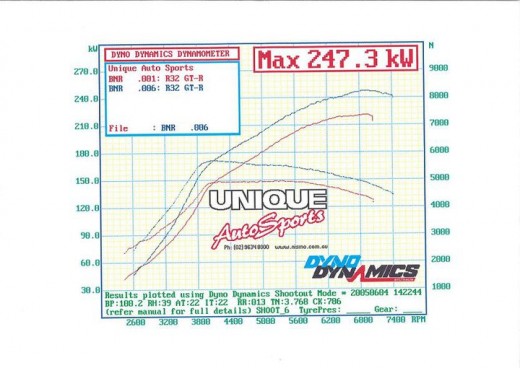
Suffice to say, if you don't plan on upgrading to larger aftermarket turbochargers, and are more than satisfied with 350 to 400 horsepower, adjustable cam gears are definitely worth the investment on the RB26 engine.

